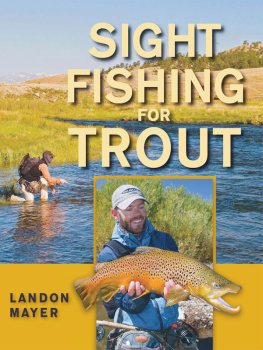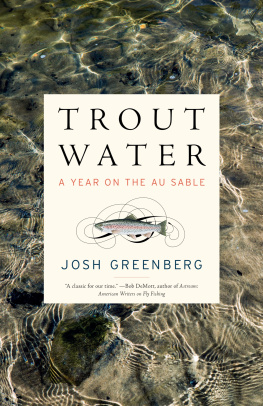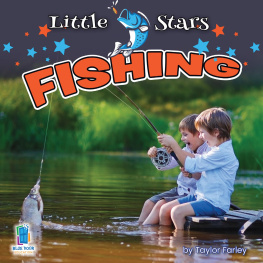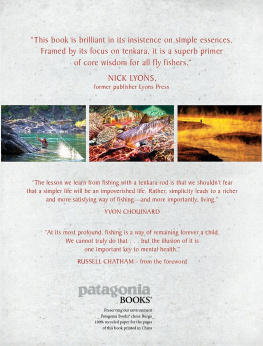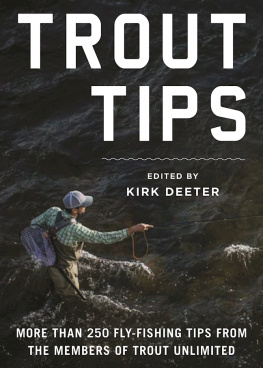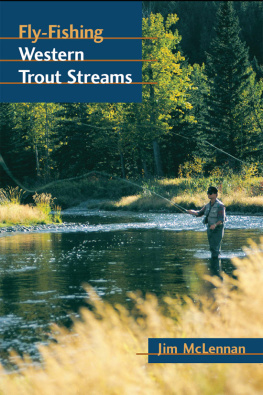NUMBER THREE: GULF COAST STUDIES
Sponsored by Texas A&M UniversityCorpus Christi
John W. Tunnell, Jr., General Editor
A generous gift from the Harvey Weil Sportsman Conservationist Award Trust helped make the publication of this book possible.
See pages 19091 for information about the Harvey Weil Sportsman Conservationist Award Trust.

Fishing Yesterdays Gulf Coast
by Legendary Guide Barney Farley
WITH HISTORIC POSTCARDS
FROM THE COLLECTION OF JIM MOLONEY AND DRAWINGS BY KEITH FARLEY
FOREWORD BY GEORGE S. HAWN
INTRODUCTION BY LARRY MCEACHRON
Texas A&M University Press
College Station
Copyright 2002 by the Harvey Weil Sportsman Conservationist Award Trust
Manufactured in the United States of America
All rights reserved
Third printing, 2016
The paper used in this book meets the minimum requirements of the American National Standard for Permanence of Paper for Printed Library Materials, Z39.48-1984.
Binding materials have been chosen for durability.

LIBRARY OF CONGRESS CATALOGING-IN-PUBLICATION DATA
Farley, Barney, 18941978
Fishing Yesterdays Gulf Coast / Barney Farley ; foreword by George S. Hawn 1st ed.
p.cm. (Gulf Coast studies ; no. 3)
ISBN 1-58544-165-1 (cloth : alk. paper) ISBN 1-58544-199-6 (limited)
ISBN 13: 978-1-60344-046-2 (pbk.)
ISBN 13: 978-1-60344-391-3 (ebook)
1. FishingTexas Gulf Coast. 2. Farley, Barney, 18941978. I. Title. II. Series
SH551 .F37 2002
799.1'6634dc21
2002001056

FRONTISPIECE: A tarpon catch in November, 1936.
Courtesy the Dr. Fredk McGregor Photo Collection of the Corpus Christi Museum
Contents
by George S. Hawn
by Larry McEachron
CHAPTER
Foreword
BY GEORGE S. HAWN
I FIRST MET BARNEY FARLEY while fishing with my father, Dick Hawn, and Ben Vaughan in the late 1930s. They both loved to fish with Barney and his guides at Port Aransas. We lived in Corpus Christi, and it was a thrill for me to be taken along on the trip from Aransas Pass to Harbor Island, over the one-way wooden causeway and on a ferryboat ride with Captain Popeye, and then to have great fishing from a Farley-built boat and afterward a late lunch at the Tarpon Inn.
It was in the late 1950s that I was reintroduced to Barney by my late friend Jack Ryan of Corpus Christi. We had a nineteen-foot boat together called the Gee Bee Jayfor George, Barney, and Jack. Jack furnished the lumber, I contributed a used inline six-cylinder Plymouth engine with a stick shift, and Barneys nephews, Fred and Jim Farley, built a fantastic boat.

We kept the Gee Bee Jay at Woodys boat basin, and for the next ten years Jack and I and our families were the luckiest fishermen in the world. Barney not only educated us in fishing. He was also such a gentleman to be with, and he taught us much about living the good life.
We were always on our way at sunrisebetter too early than too latewith live bait. Barney preferred to use eight-foot rods with spinning tackle and 10# test line, but he and I also carried an extra six-foot rod with ultralight spinning gear and 6# test line to give a bit more thrill to the catch. A couple of rods with Penn bait casting reels and 15# test line were for heavy-duty use. We generally started out just south of the channel, coming out at the lighthouse, then worked north on the west shoreline of Lydia Ann Channel. Each spot had a nameThree-trout Hole, Six-trout Hole, and so on. Barney knew exactly how many fish could be caught in each spot. He always told me to stick the anchor into the water and not to cause a splash or noise that would scare off the fish. Occasionally, we would take a trip to the jetties for trout, redfish, and sheepshead.
On nice calm days, a run up the shoreline to fish the wrecks produced good-sized trout and sometimes a tarpon, which didnt stay on long with our light tackle. On windy, rough days Barney always had a fallback option. One of his favorites was on the east side of the north end of Lydia Ann Channel. In low gear and trolling a red-and-white Mirrolure in four feet of water, we routinely caught four or five very large trout in a morning.
Barney always filleted the fish, and my job was to remove the skin and clean the fish. And I mean clean and clean again until they were perfect.
Congratulations and thanks to Dick Conolly and the Harvey Weil Trust for helping to bring about the publication of Fishing Yesterdays Gulf Coast, by legendary guide Barney Farley. What a fine collection of stories written by a master fisherman. 
About Barney Farley
The first day I crawled, I could have crawled into salt water.
I havent been away from it since. I got interested in fishing through inheritance.
I think I had a few scales on me when I came into the world.

BORN IN 1894 IN CARRABELLE, FLORIDA, to a long line of fishermen and boatmen, Barney Farley was raised on the waterfront. His grandfather was lost at sea just before his father, James William Farley, turned eighteen. Jim Farley became a foreman in the lighthouse service and worked on lighthouses and buoys in Florida and up and down the Gulf Coast. In 1910, he took his family to Port Aransas to work on the Aransas Light, when his son Barney was sixteen years old.
Located at the northern end of Mustang Island on the central Texas coast, Port Aransas at that time was a small fishing village of a few hundred people. Access was by a mail boat that came and went once each day.
In Port Aransas, fishing was big business. Isolated though it was, it attracted sport fishermen from all over the country because of its excellent tarpon fishing. I spent most of my time in Port Aransas along the docks, talking to fishing guides and watching as the boats went out to sea and returned, bringing in an array of fish, especially tarpon. I learned that from May to November the boats were booked ahead by wealthy and prominent people from as far away as New York and Chicago.
I decided to become a fishing guide. In those early days, we fished from rowboats exclusively. A good, strong guide who didnt mind rowing from sunrise to sunset could earn himself three dollars a daypretty good wages at that time.
World War I and a hurricane that hit Corpus Christi in 1919, clocking 120-mile-an-hour winds and nearly destroying Port Aransas, interrupted Barneys guide business, and for about five years he fished commercially out of Galveston. In 1920, he married Marie Shipley of Sail Creek, Tennessee, whom he had met by mail while wounded and in the hospital in France during the war. Marie later worked for the post office, and she and Barney had two sons, Raymond and Barney Jr.
Around 1928 or 1929, Barney borrowed money to build a waterfront tackle shop and charter business in Port Aransas. Soon he had six guides working for him, and for years thereafter Barneys Place was the hub of sport fishing activitya central meeting place for anglers and the areas unofficial fishing headquarters. To capitalize on the outstanding tarpon fishing at Port Aransas, Barney and Grady Kinsolving, the publisher of the
Next page

